Kata Tjuta and Uluru; exploring the Red Centre
We flew to the Red Centre and rented a motorhome in Alice Springs. Then began our unforgettable trip through the heart of Australia. Our route took us to the iconic Uluru (Ayers Rock), the striking domes of Kata Tjuta (Olgas), the breathtaking Kings Canyon, and the rugged beauty of both the West and East MacDonnell Ranges.
Uluru (Ayers Rock)
Uluru, also known as Ayers Rock, is a massive sandstone monolith in the heart of Australia. This iconic landmark is not only a natural wonder but also a place of deep cultural and spiritual significance for the Aboriginal people, who regard it as a sacred site.
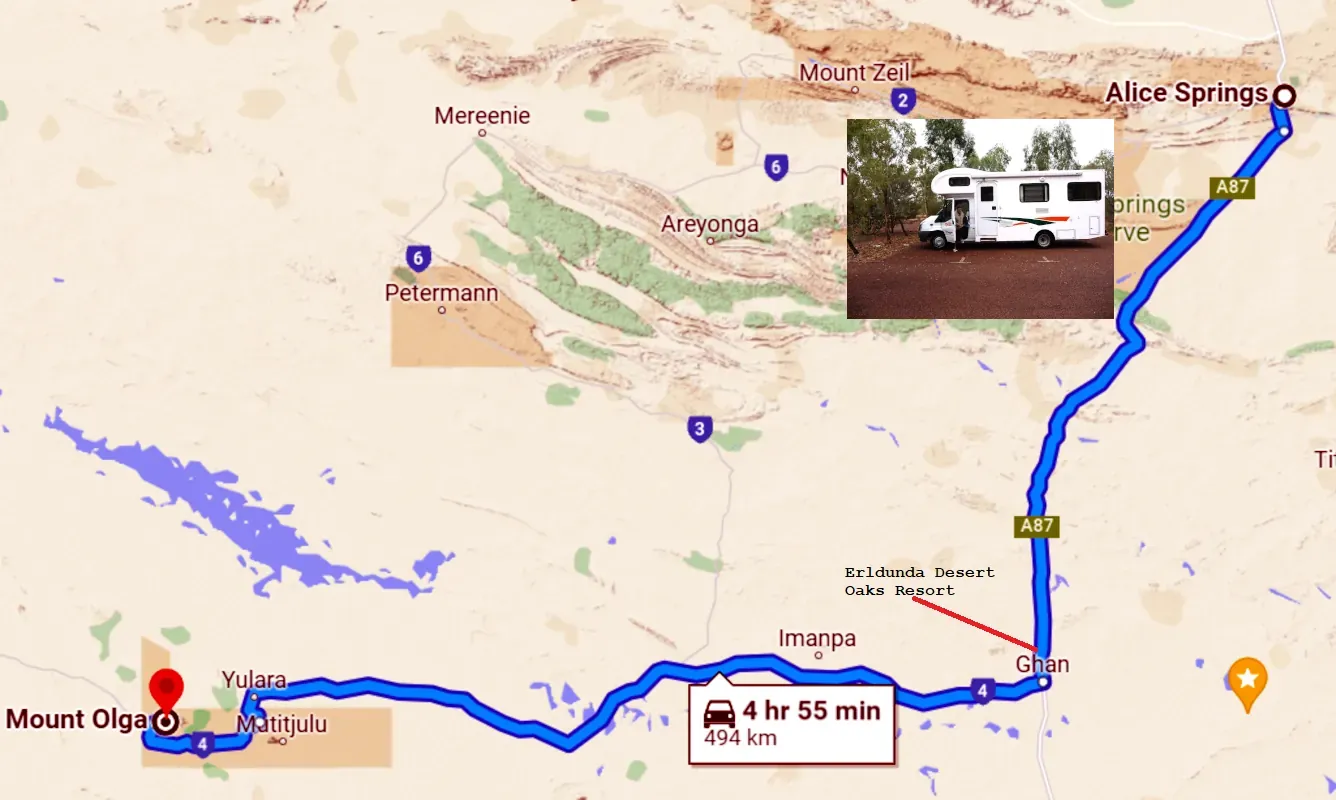
We spent the first three days in Alice Springs exploring the Araluen Cultural Precinct, where we were impressed by the stunning paintings of Albert Namatjira. We also visited the Desert Park and the historic Telegraph Station. Alice Springs is a nice town, but we were saddened by the sight of many homeless Aboriginal people wandering the streets. Before heading to Uluru, we stocked up on groceries, with our first stop being the Desert Oaks Resort in Erldunda, where we stayed overnight.
Sunset Uluru

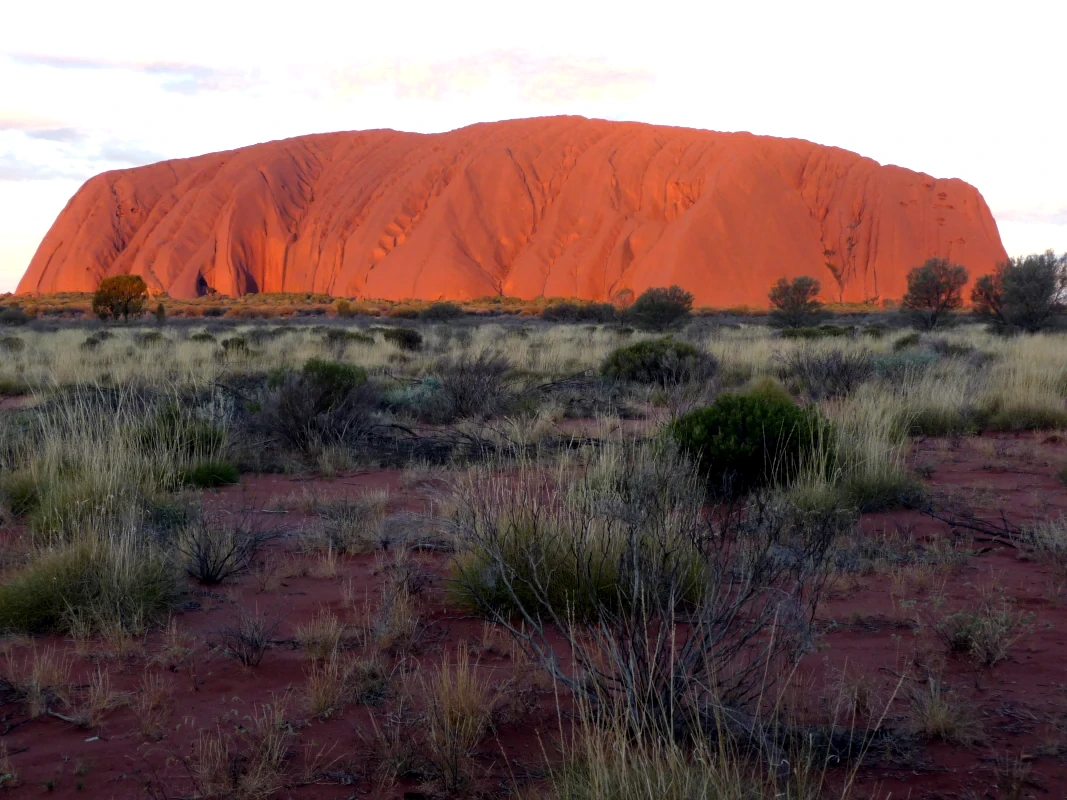
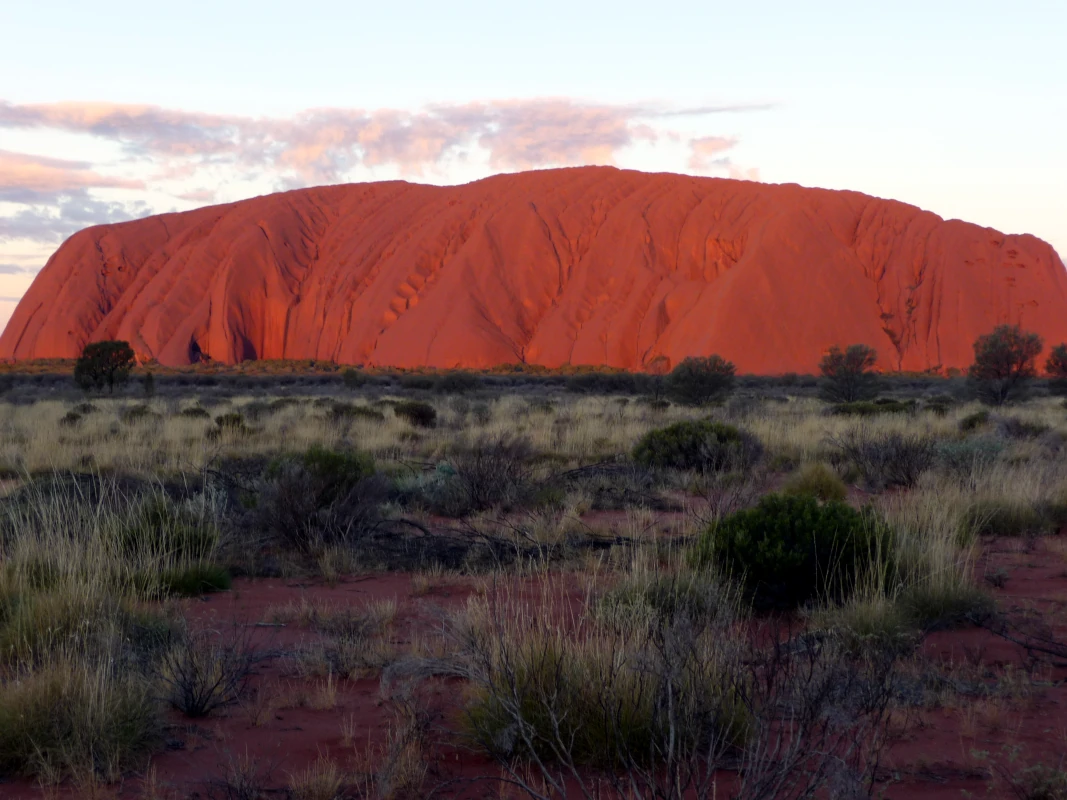
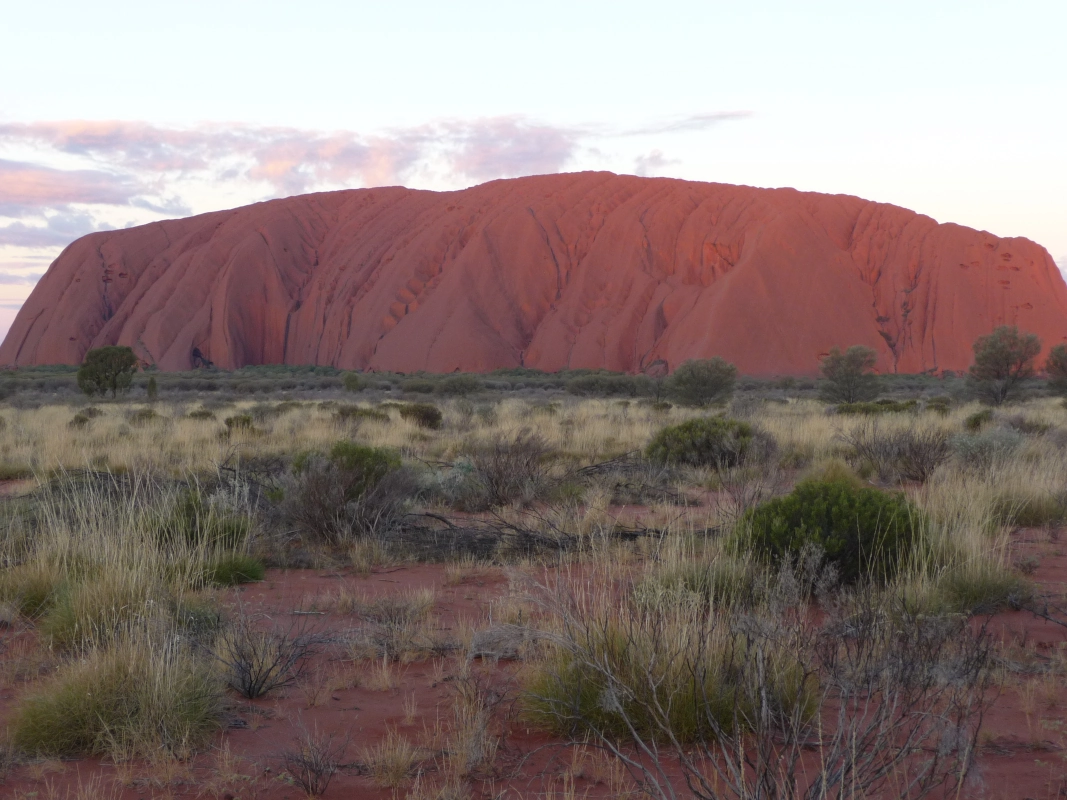
On our first evening in Uluru, we watched the dramatic sunset over the iconic monolith. It’s essential to arrive early, as the viewing areas can get quite crowded. And don’t forget to bring a bottle of bubbly to make the experience even more special! As the sun sets, the massive rock transforms, shifting from pinkish tones to a vivid orange and red.
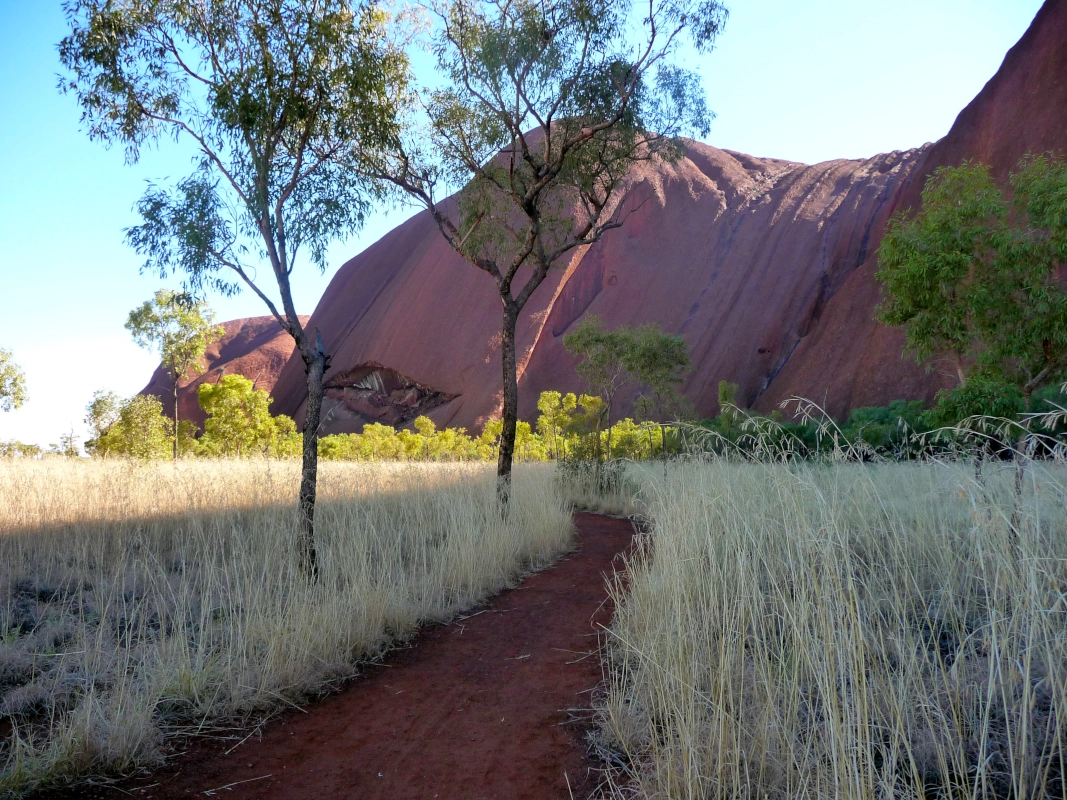
Instead of climbing Ayers Rock, we chose to walk around its base. The 10.6 km Base Walk is a scenic trail around Uluru, taking approximately three to four hours to complete. Along the way, we enjoyed the rock’s ever-changing textures, colours, and sacred sites.

Uluru rocks were originally grey, but the minerals were washed away after a thousand years, and the iron turned the rock red.
Travel to Kata Tjuta (Olgas)
Kata Tjuta, also known as The Olgas, is a stunning collection of domed rock formations in Australia’s Northern Territory. It’s sacred to the traditional owners of the land. It is renowned for its breathtaking sunrise and sunset views, where the rocks glow in vivid hues. Kata Tjuta is also a fantastic place for hiking.
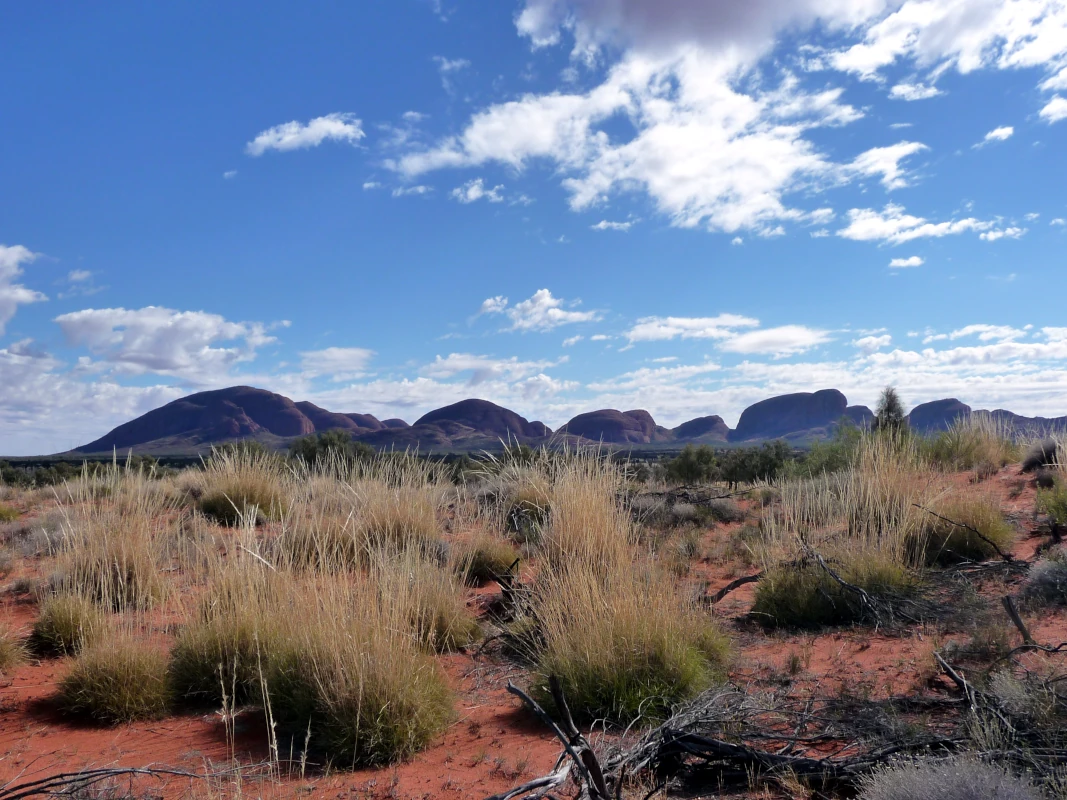
From Uluru, we took a day trip to Kata Tjuta (The Olgas), a striking collection of 36 dome-shaped rock formations. These massive formations are composed of a conglomerate of boulders, including granite and basalt, cemented together by coarse sandstone. Rising 546 meters above the surrounding plains, Kata Tjuta is even more imposing than Uluru, with its highest peak, Mount Olga, standing at 1,066 meters. Mount Olga was named in honour of Queen Olga of Württemberg, who was born Grand Duchess Olga of Russia, the daughter of Tsar Nicholas I.
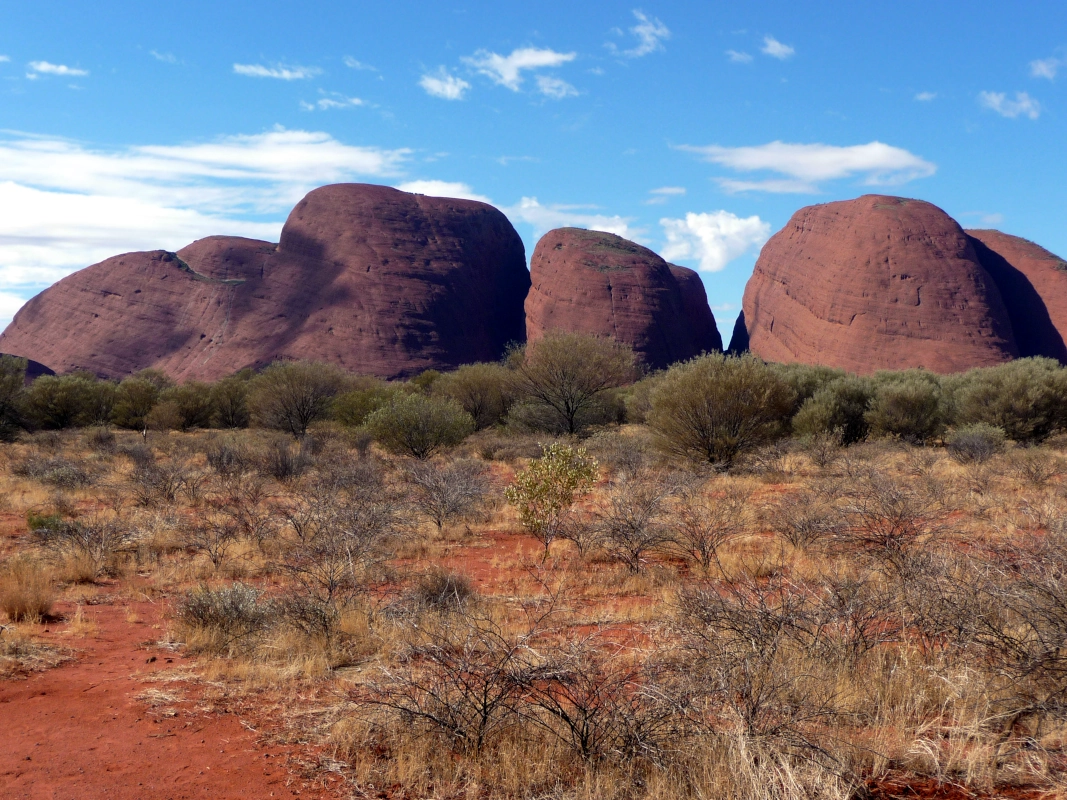
Kata Tjuta – Olgas, view from the entrance car park.
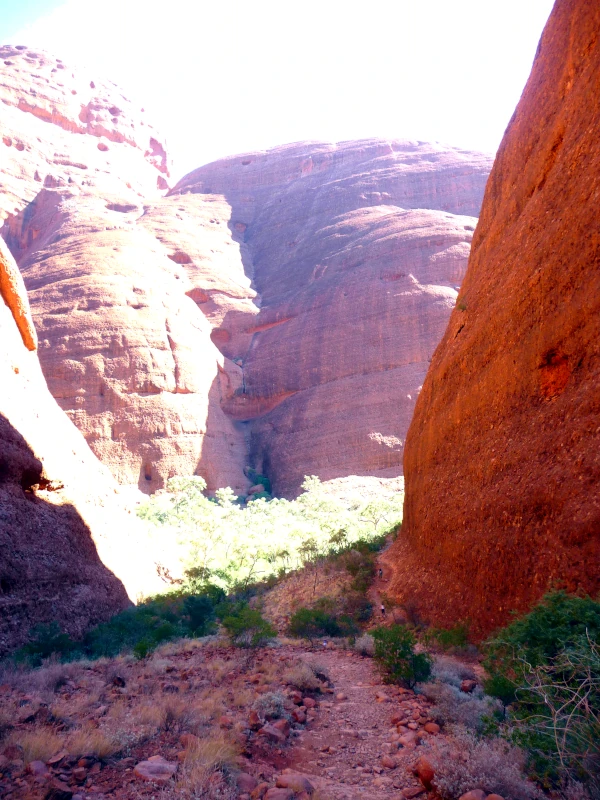
We hiked the Valley of the Winds trail, a challenging Grade 4 trek that is steep and rocky in sections, taking around 3-4 hours to complete. The effort was well worth it, as the trail offered breathtaking views of Kata Tjuta’s domes and rugged landscapes, making it one of the most rewarding hikes in this area.
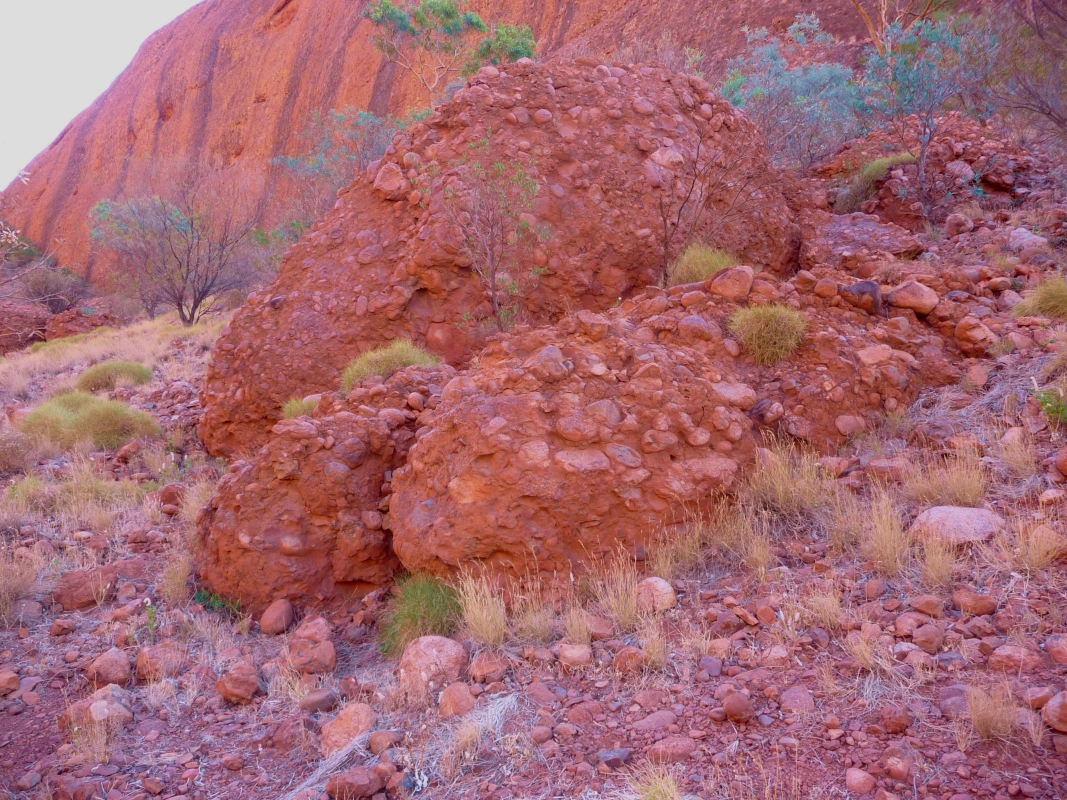
Beautiful conglomerate boulders.
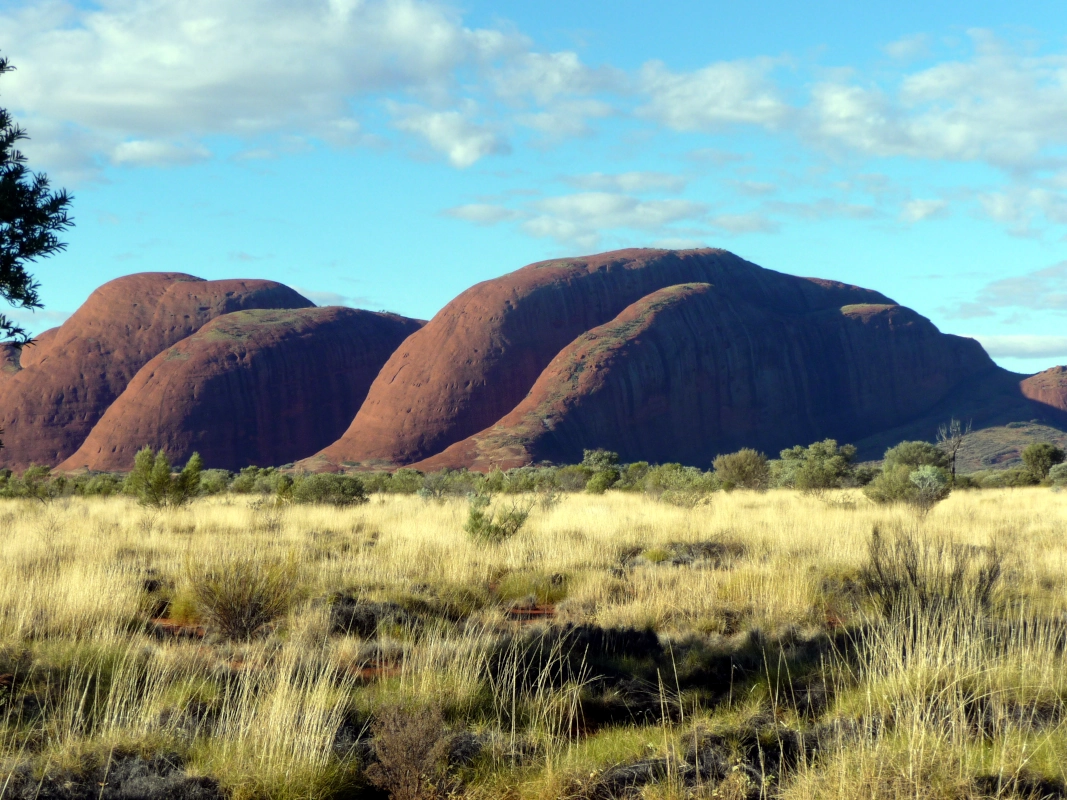
Before leaving, we shot our final photo of Kata Tjuta from the dune viewing area, where the panoramic view of the domes created a perfect farewell moment.
Travel to Kings Creek Station
Kings Creek Station is a working cattle station near Kings Canyon. It offers a range of accommodations, a nice cafe, and a well-stocked station shop. Guests can enjoy a variety of activities, including guided quad bike tours, camel safaris, and scenic helicopter flights.
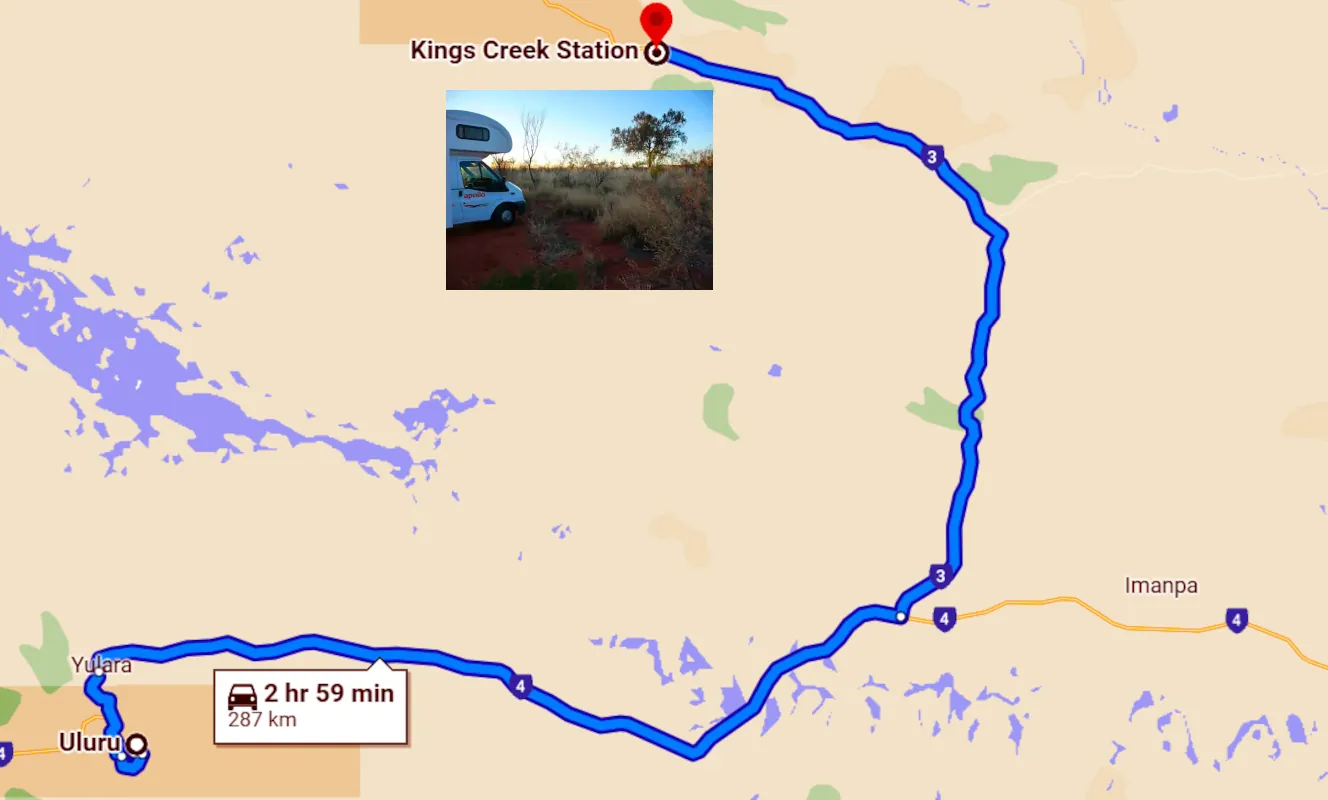
From Yulara, we drove to our next destination Kings Creek Station, which is a three-hour drive.
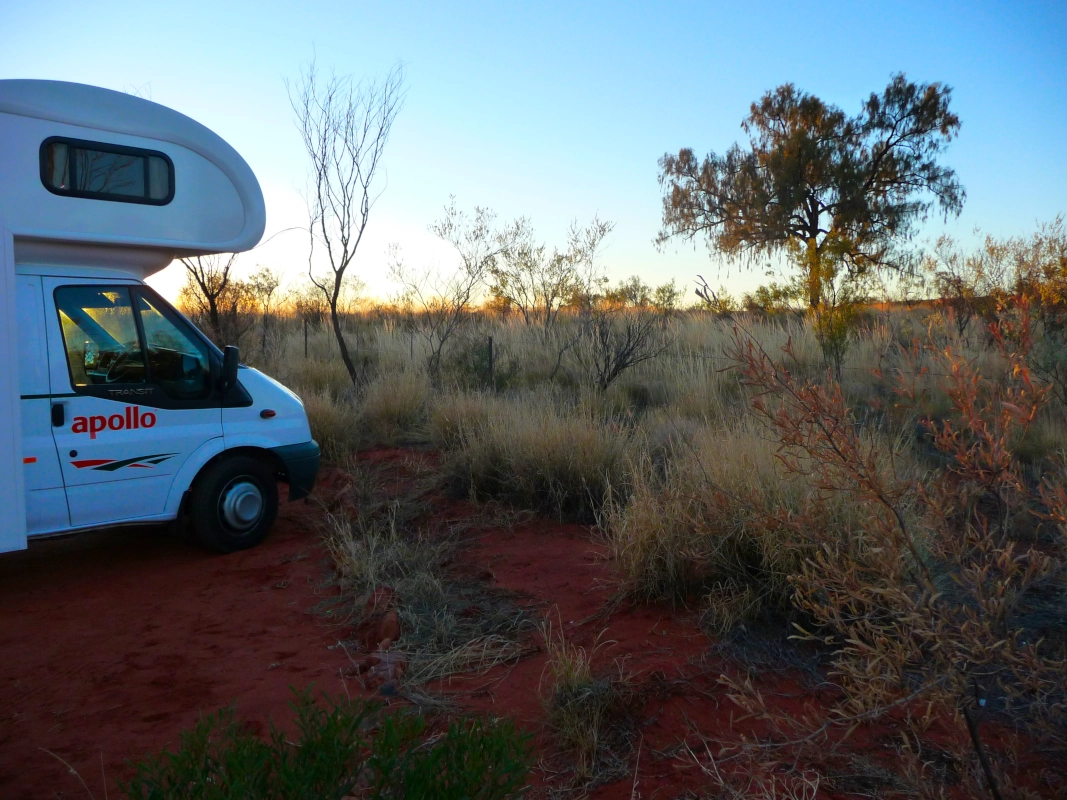
We spent three days in a secluded spot with our motorhome and enjoyed the tranquillity of the outback. It was an unforgettable experience and the perfect base for exploring the breathtaking trails of Kings Canyon.
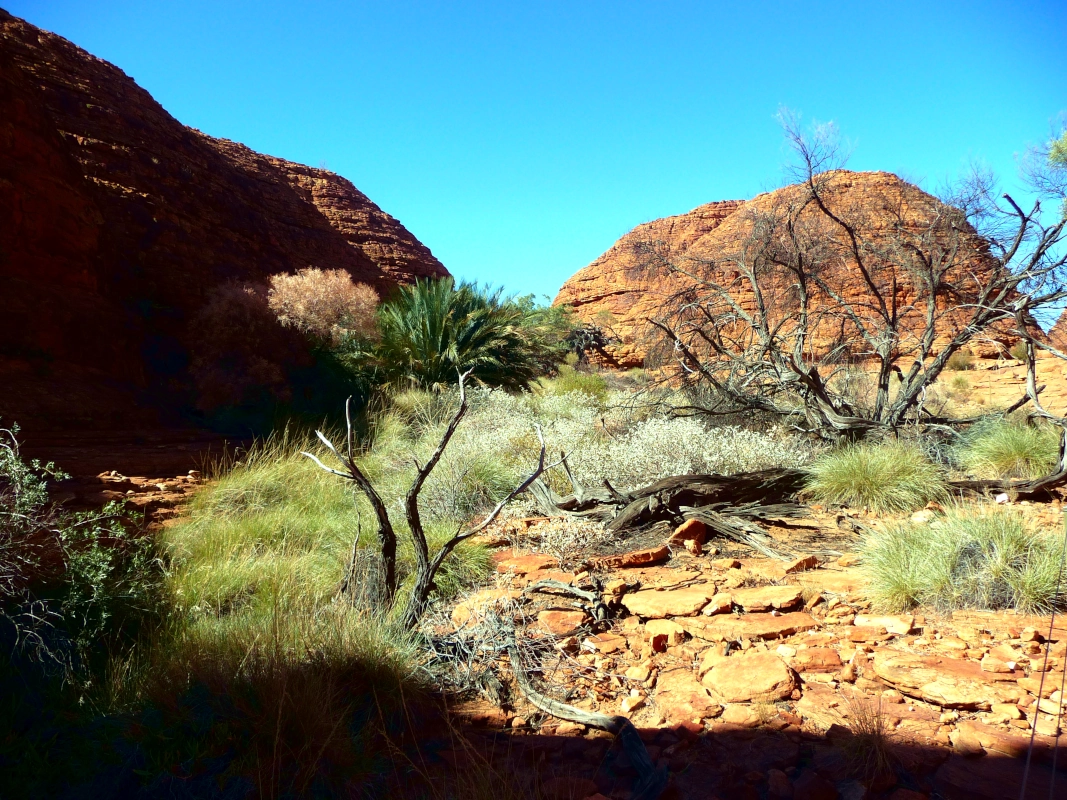
If you enjoy hiking, the Kings Canyon Rim Walk is a must. The trek takes around three to four hours to complete, starting with a challenging ascent of 1,000 steps. However, once you reach the top, the rest of the trail is relatively easy and rewards you with breathtaking views.
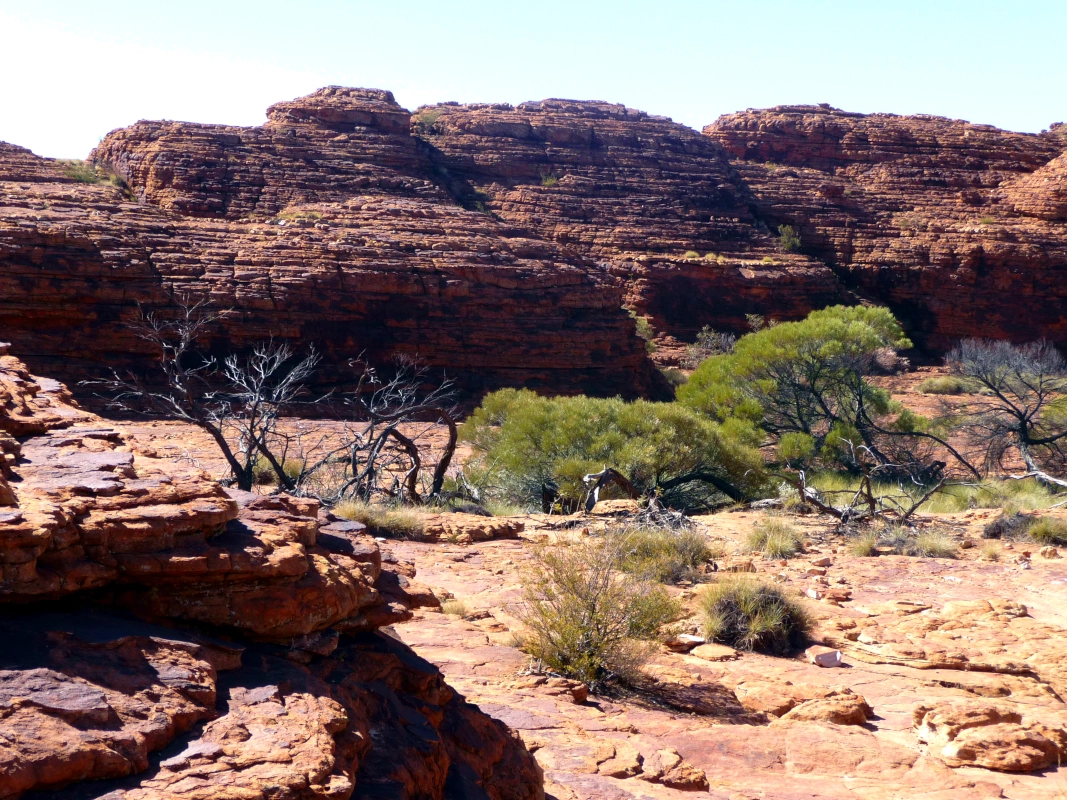
When reaching the top, you’ll see the Lost City, a striking formation of sandstone domes similar to but much smaller than the Bungle Bungles
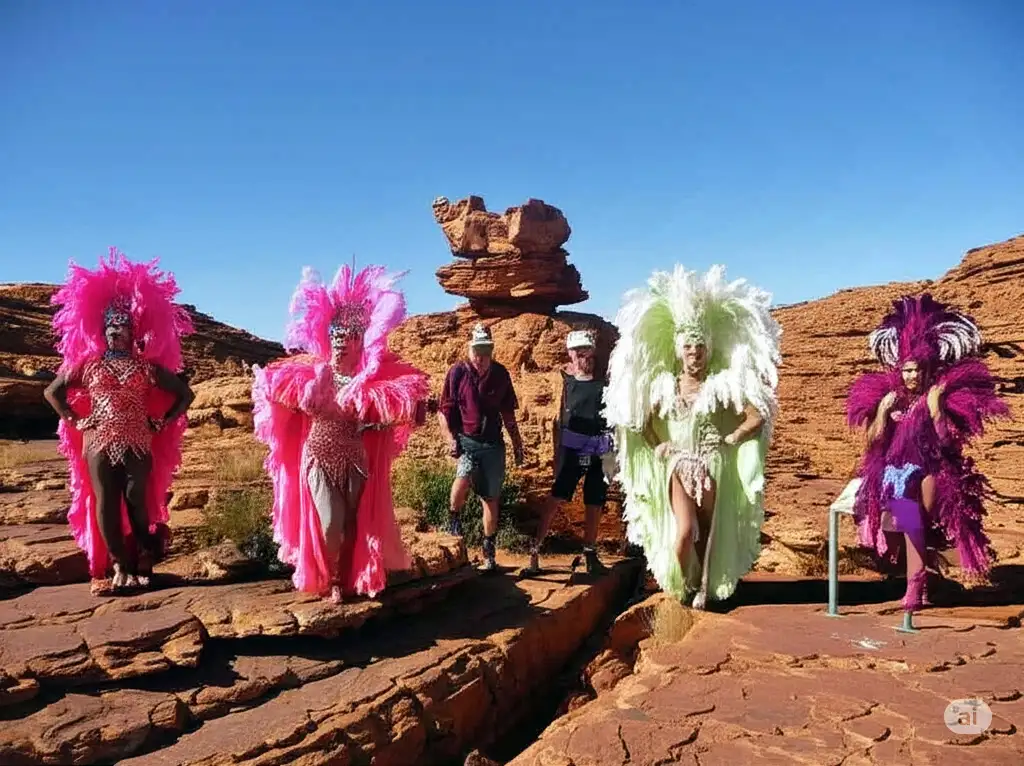
When your outback adventure takes a surprisingly glamorous turn! We met the cast of Priscilla, Queen of the Desert they were absolutely lovely and happily posed with us for a great photo.
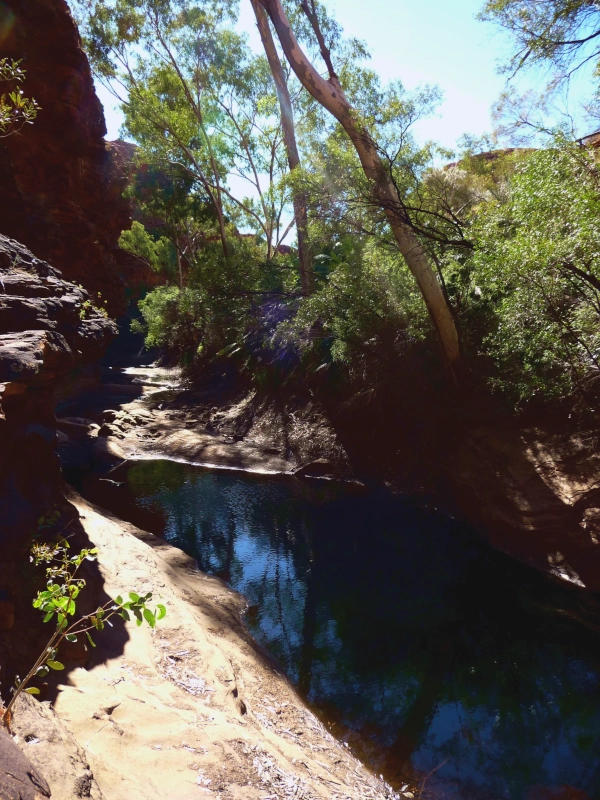
Later, we followed a side trail down a steep staircase, leading to the Garden of Eden a stunning waterhole surrounded by lush greenery.
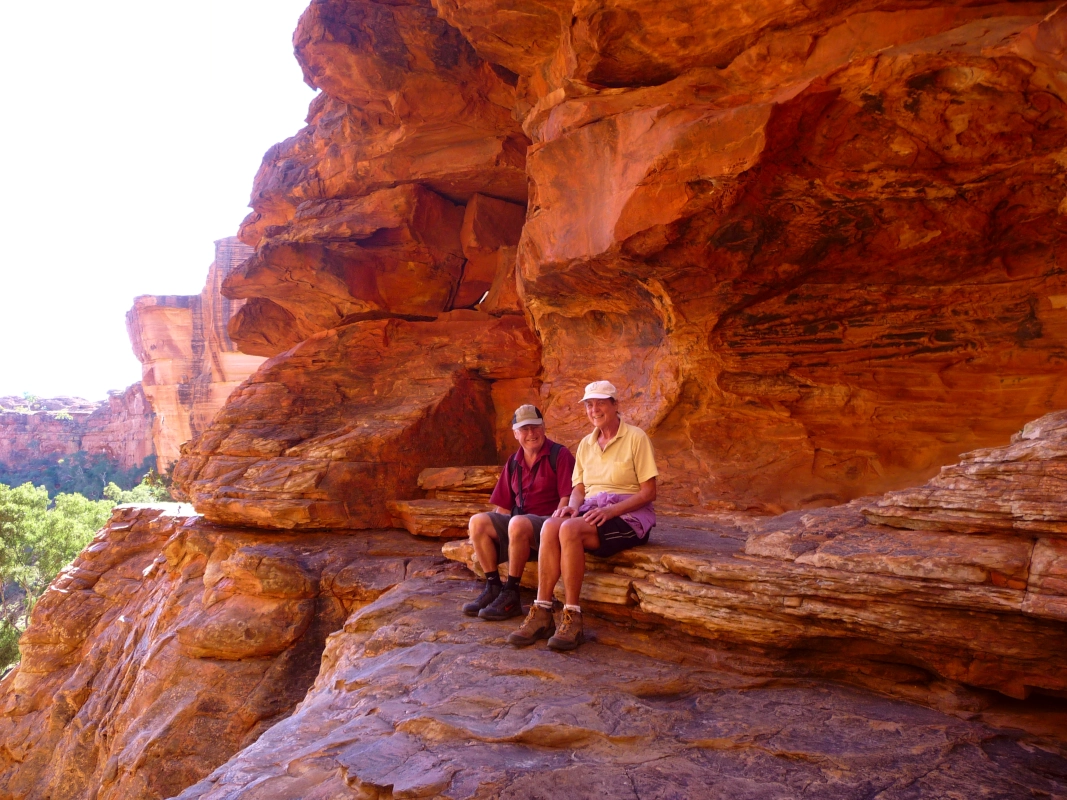
After completing the most challenging section, we took a well-earned rest, with a fantastic view of Kings Canyon Valley.
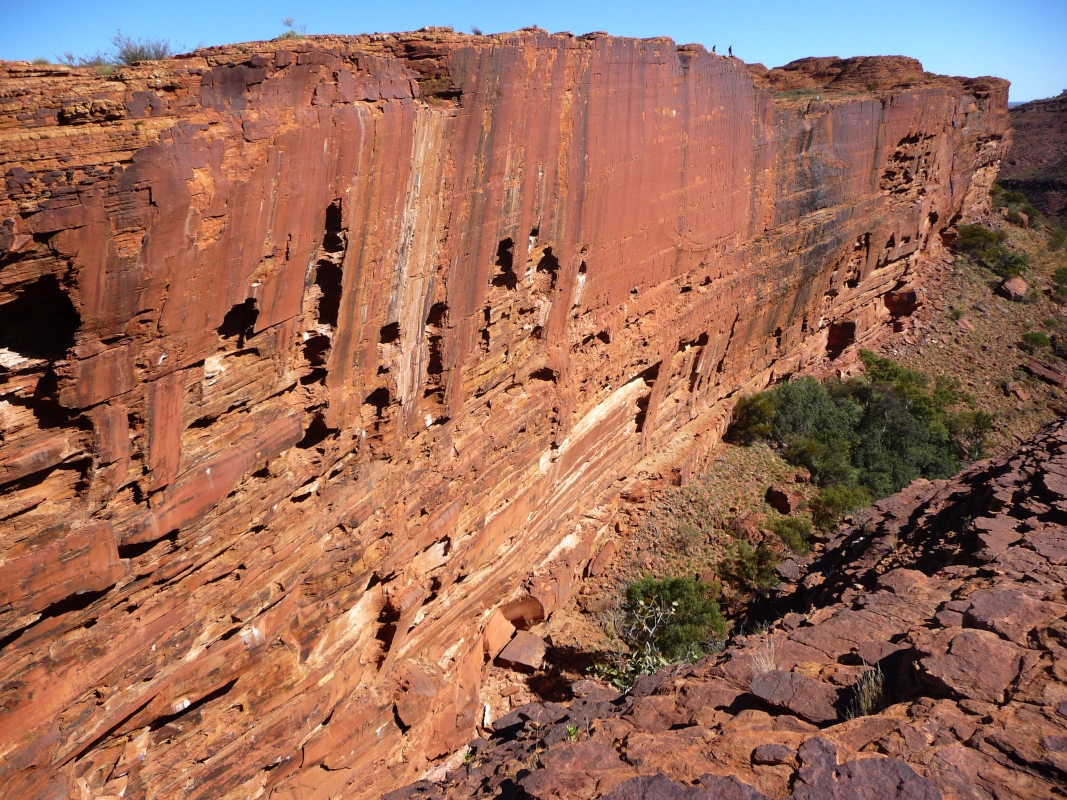
The view of the Kings Canyon rim, where we had just hiked, was truly spectacular.
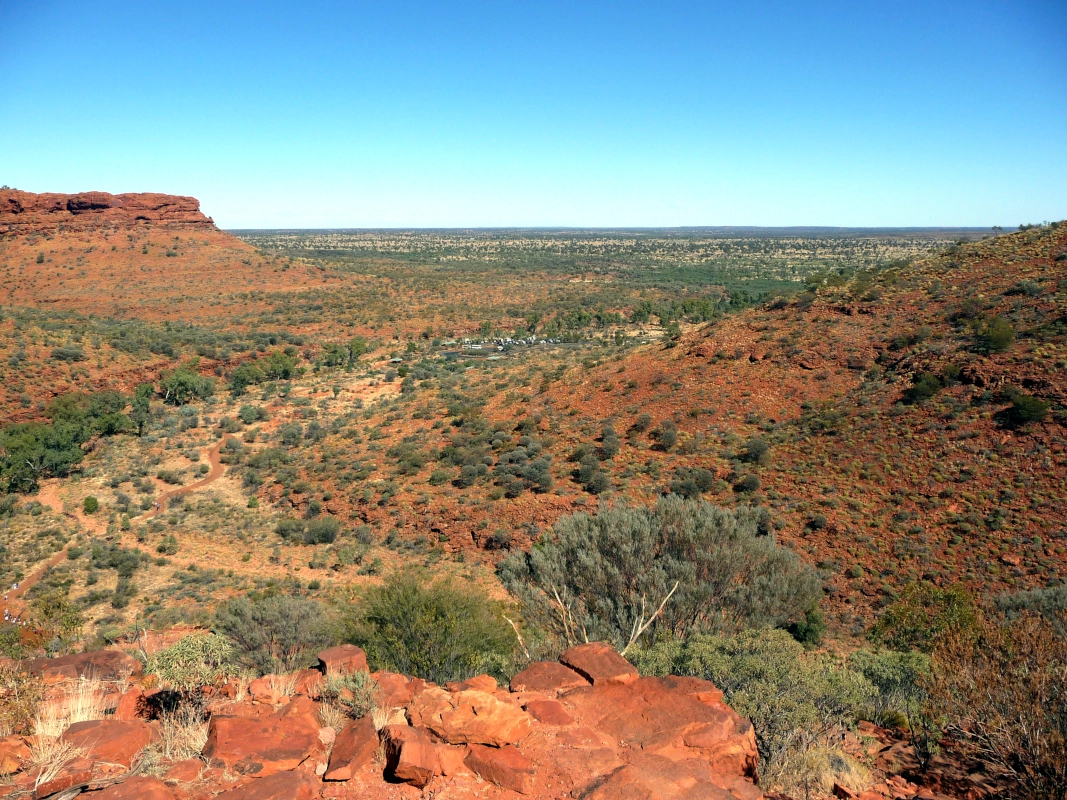
What a stunning, big red country!
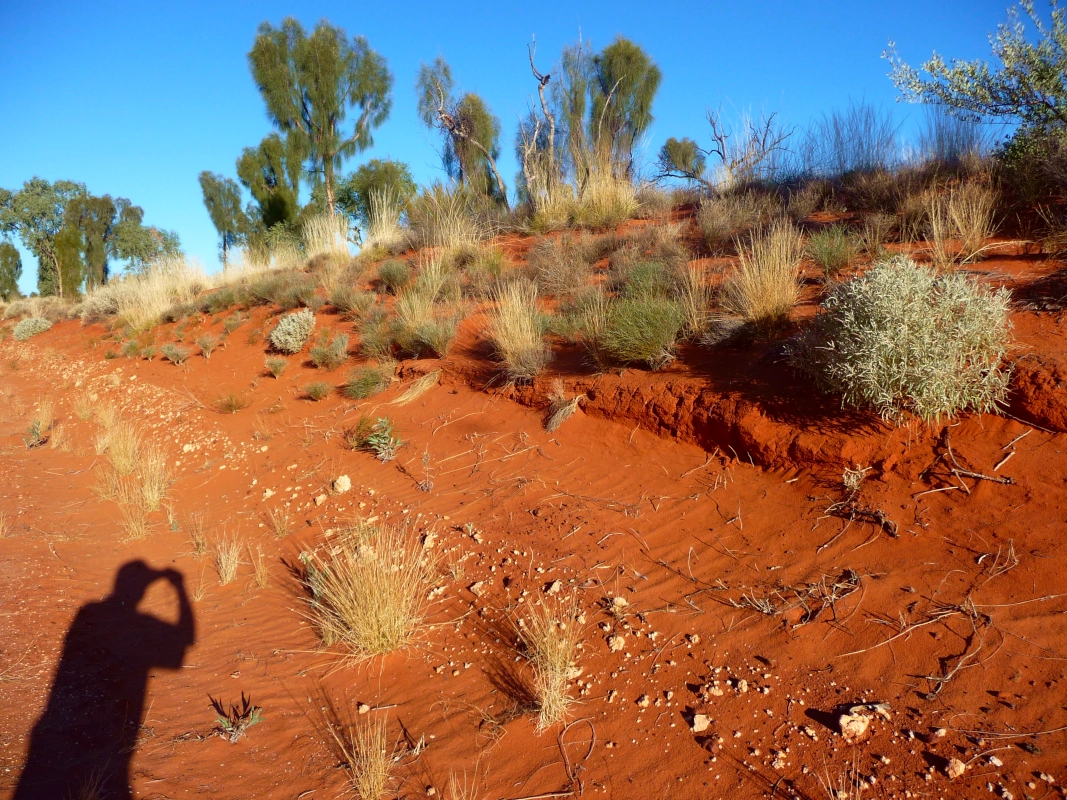
This is why it’s called the “Red Centre.”
West MacDonnell Ranges
The West MacDonnell Ranges are a stunning mountain range. They stretch over 160 kilometres west of Alice Springs. It’s a vast ancient landscape featuring striking red quartzite gorges, chasms and waterholes. The ranges are popular for hiking, camping, and taking photos. The ranges also hold deep cultural significance for the Aboriginal people.

We drove from Alice Springs To Glenn Helens and on the way we explored most of their iconic places.

Standley Chasm is a must-see destination in the Red Centre. The trail into the chasm is only 1.2 kilometres long. The best time to visit is around midday when the sunlight shines on the rock walls, creating a breathtaking display of vibrant reds and oranges.
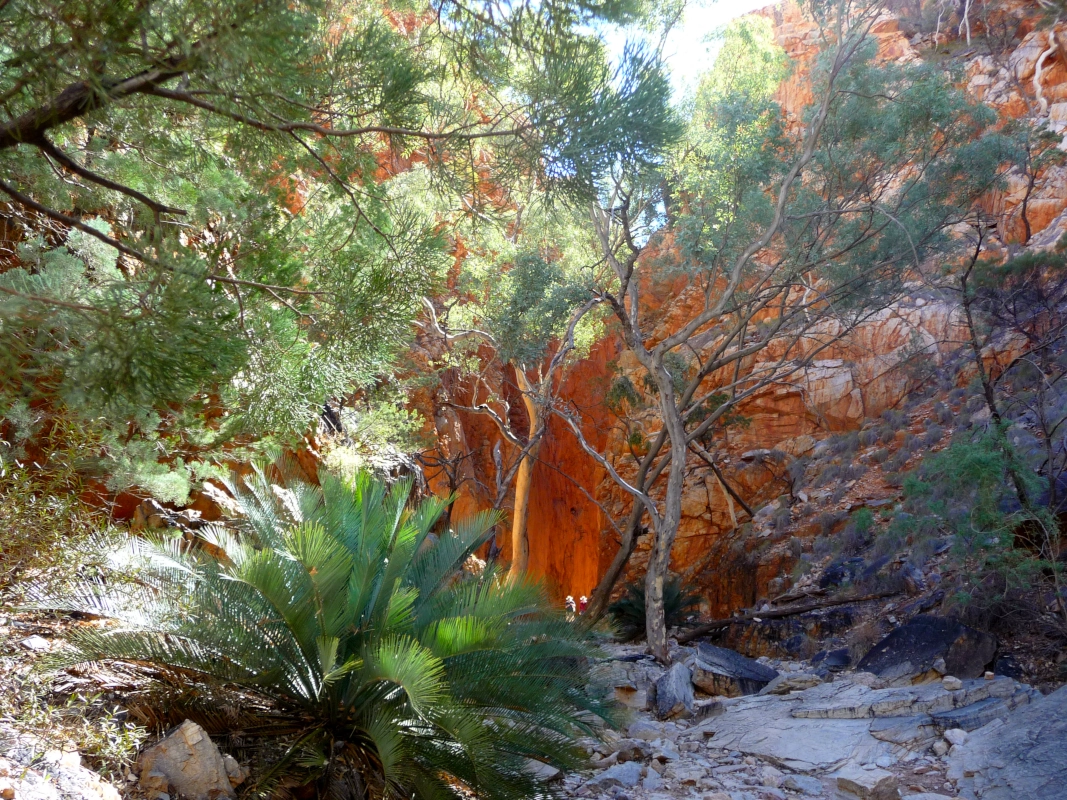
Even at midday, the track remains mostly shaded, providing a cool and pleasant walk. The trail is lined with beautiful vegetation, including gum trees, ferns, cycads, and wildflowers. Keep an eye out for wildlife you might be lucky to spot a wallaby or even a dingo along the way.

On our way to Glen Helen, we stopped at Ellery Creek Big Hole, a popular spot for swimming, picnicking, and camping. Instead of taking a dip, we chose to hike the 2.5-kilometre Dolomite Circuit, exploring the stunning landscape along the way.
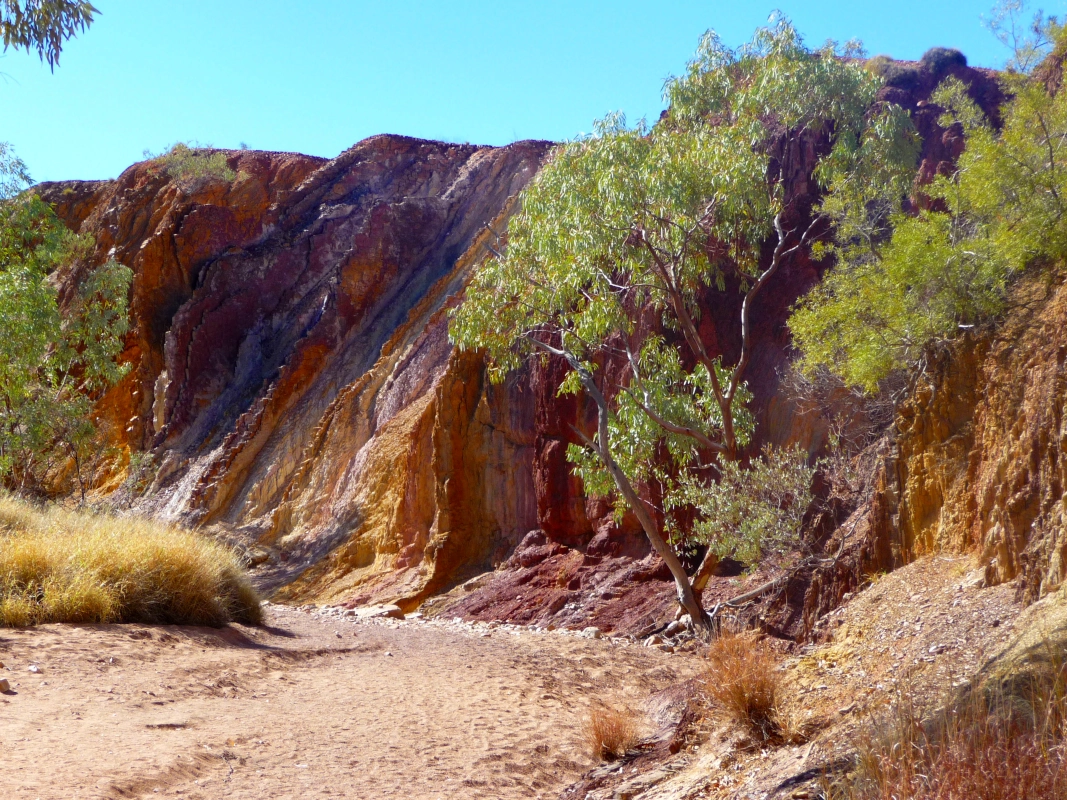
A short distance away, the Ochre Pits, a striking cliff of ochre rock in various colours. Aboriginal people used ochre for painting, ceremonial purposes, and medicine.
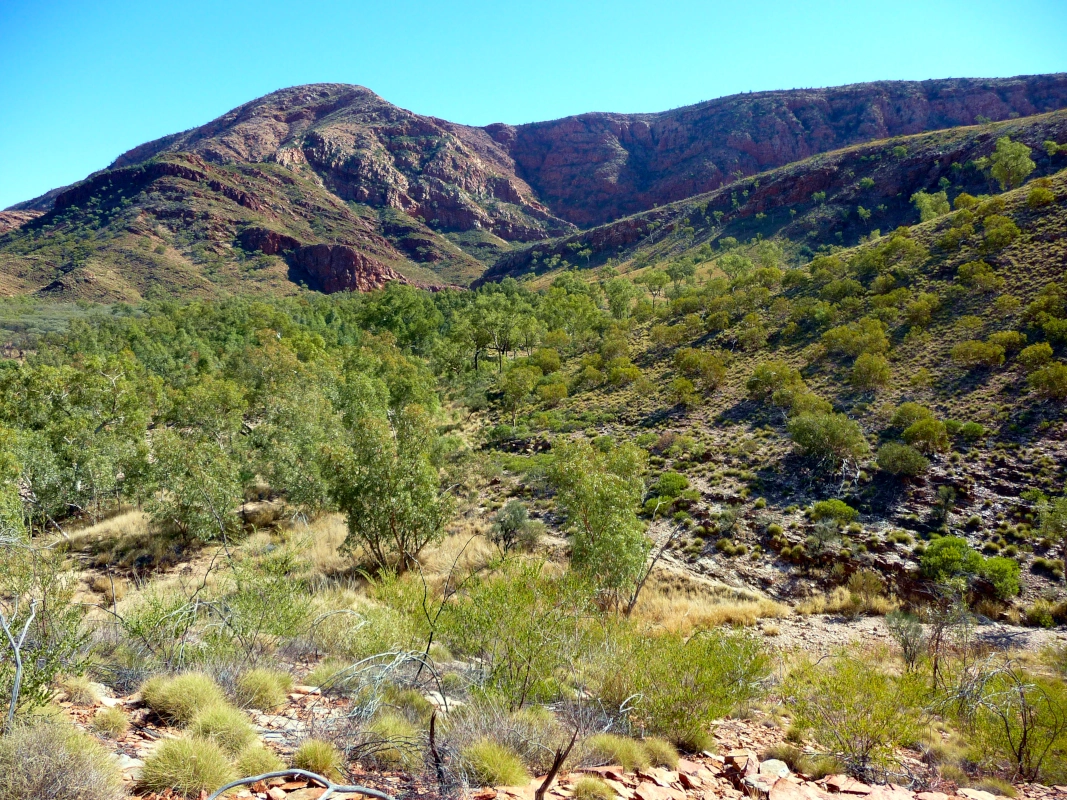
Next, we headed to Ormiston Gorge and took on the Ormiston Pound Trail, a spectacular 9-kilometre loop considered one of the best hikes in the West MacDonnell Ranges. The walk took us four hours through breathtaking landscapes. To top it off, Ormiston Gorge is home to a permanent waterhole, perfect for a refreshing swim.

After climbing up the ridge, we had a breathtaking view of the Pound before making our way down into the big valley below.
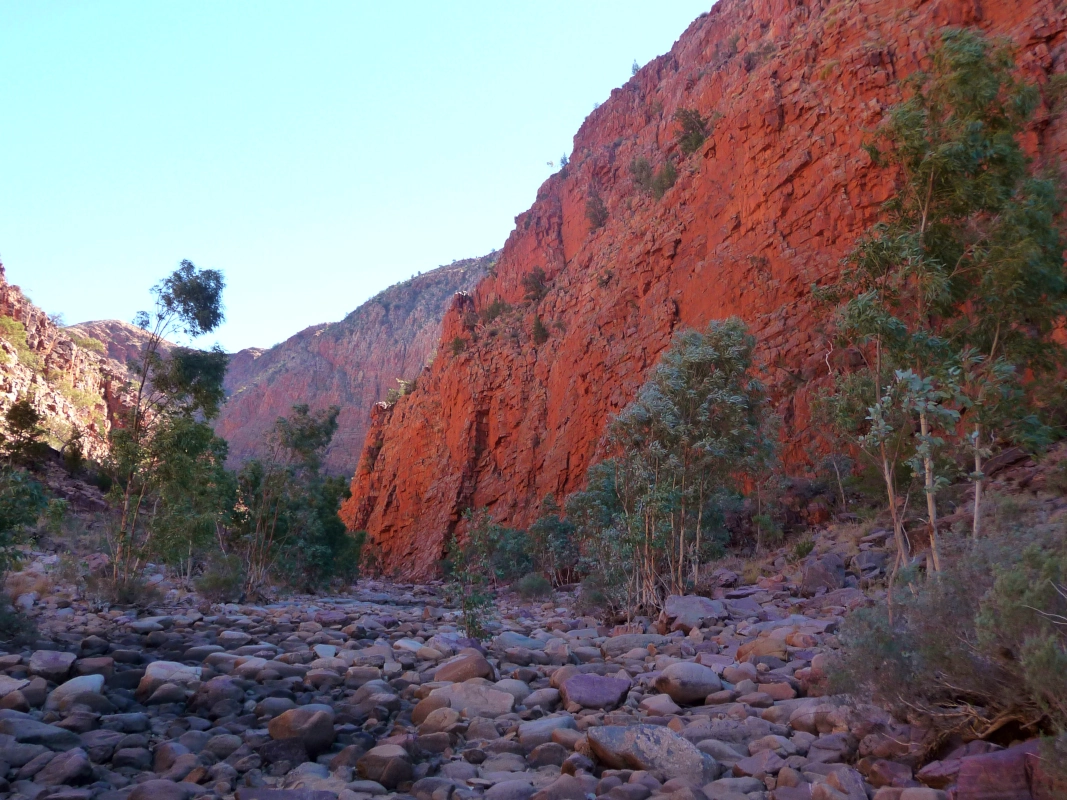
The walk finished with a stunning view of the red cliffs. It was an unforgettable hike.
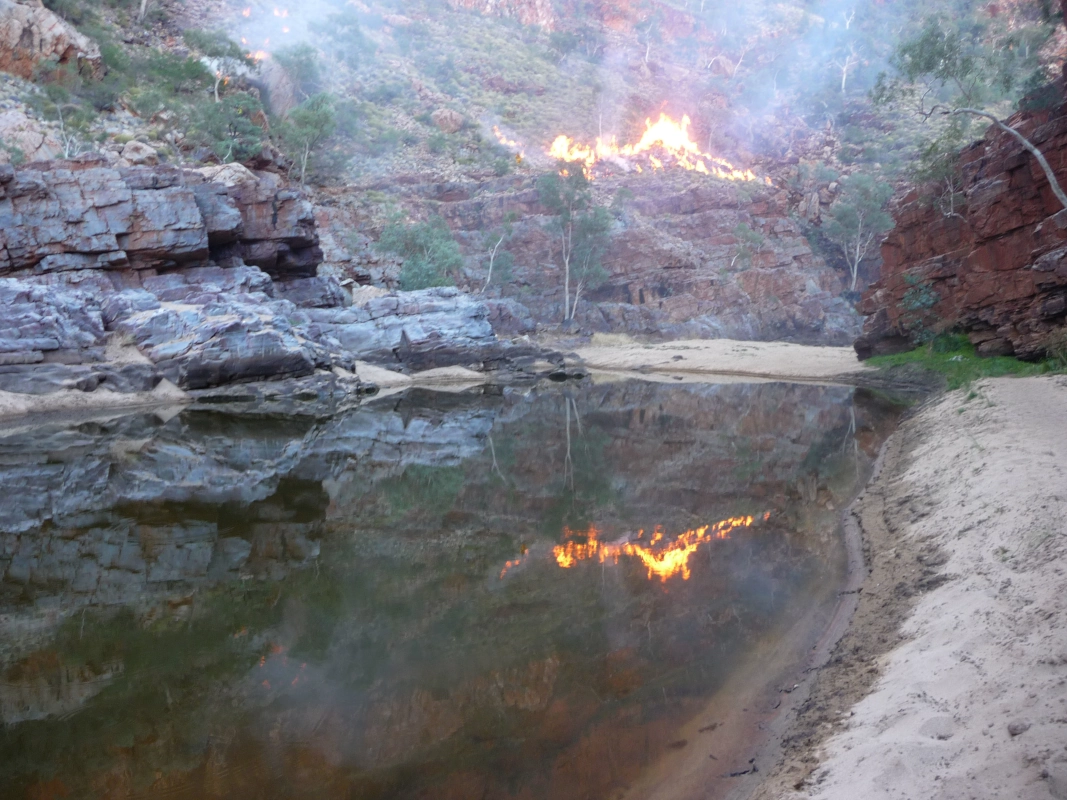
To top off an already incredible day, the ranger did backburning in the area. That created mesmerizing light effects over the waterhole.
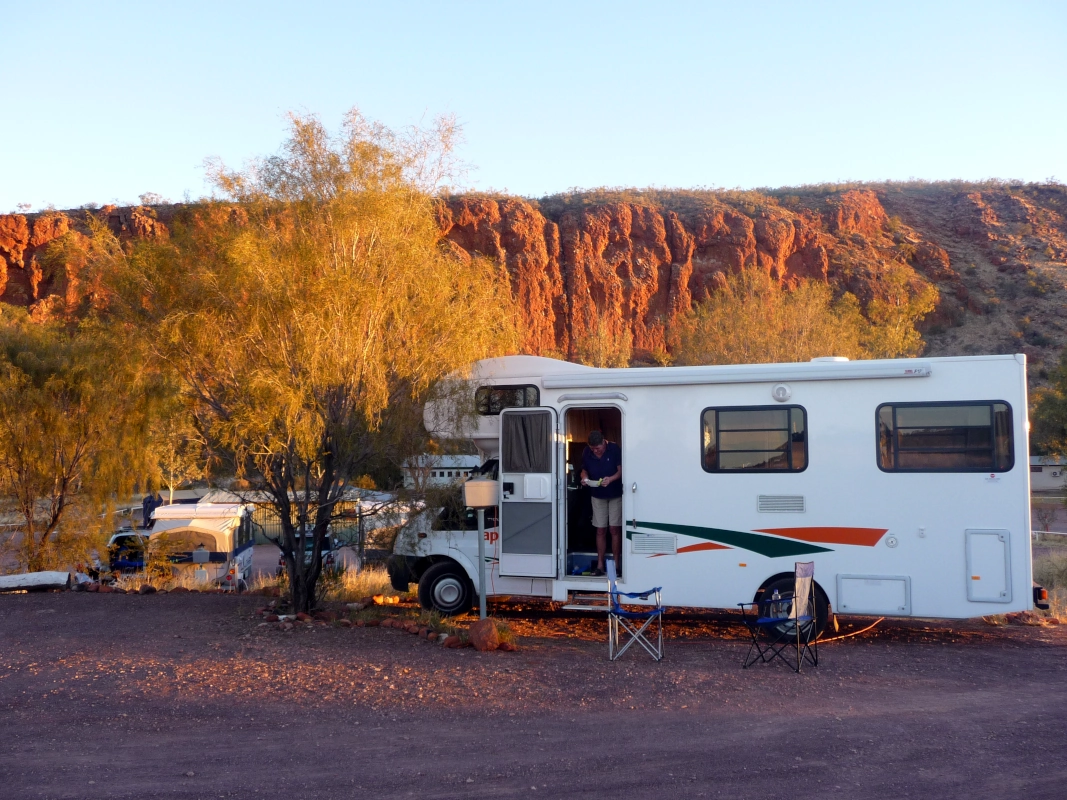
During our stay at the camping ground in Glen Helen Resort, we had a great time enjoying the stunning scenery, hiking, and swimming in the waterhole. After our long hikes, we relaxed with drinks and a meal at the restaurant while listening to the piano music.

Mount Sonder, at 1380 metres above sea level, is the fourth-highest peak in the Northern Territory. The trail to Mount Sonder is about 16 kilometres long each way and can take 6-8 hours to complete. This hard hike wasn’t suitable for us.
East MacDonnell Ranges
The East MacDonnell Ranges extend 150 km east of Alice Springs, renowned for their stunning outback landscapes, including rugged gaps, dramatic gorges, scenic bushwalks, and ancient Aboriginal rock art. The first 75 km, up to Trephina Gorge, is sealed, while beyond that, a four-wheel-drive vehicle is recommended.
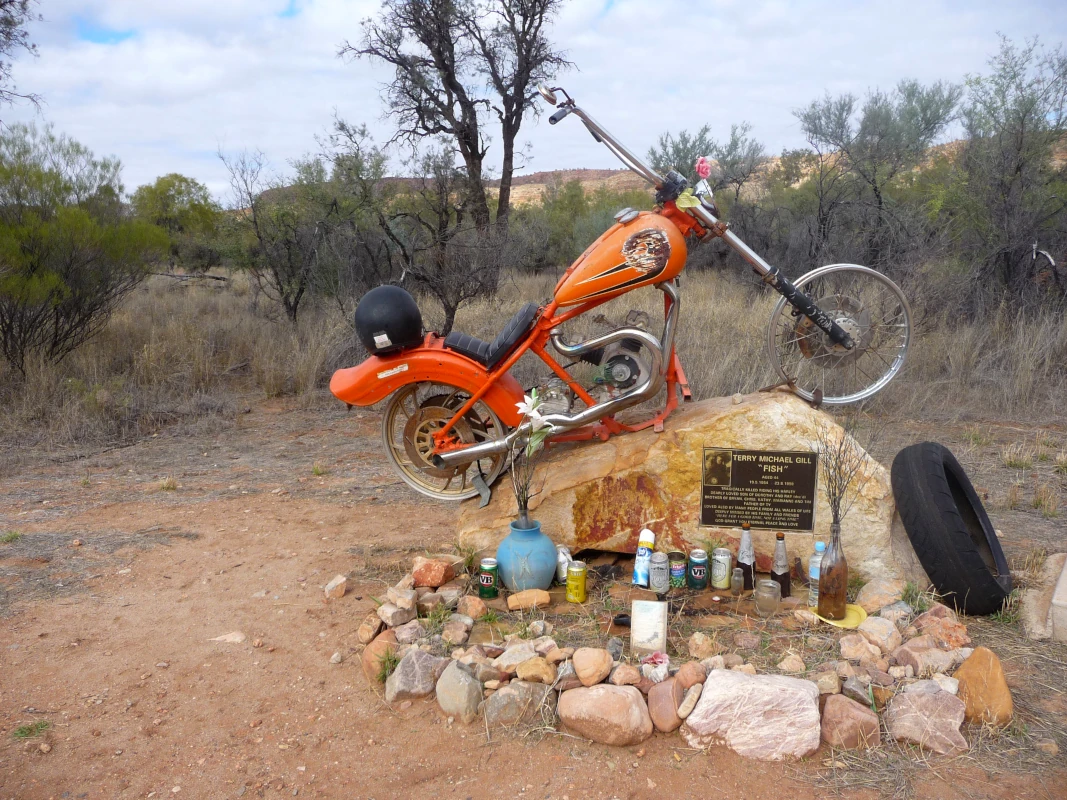
Even though the Ross Highway sees little traffic, accidents can still happen. A striking example is the Terry Michael Gill (Fish) memorial along the route. The VB beer can on the left? That one’s from me.
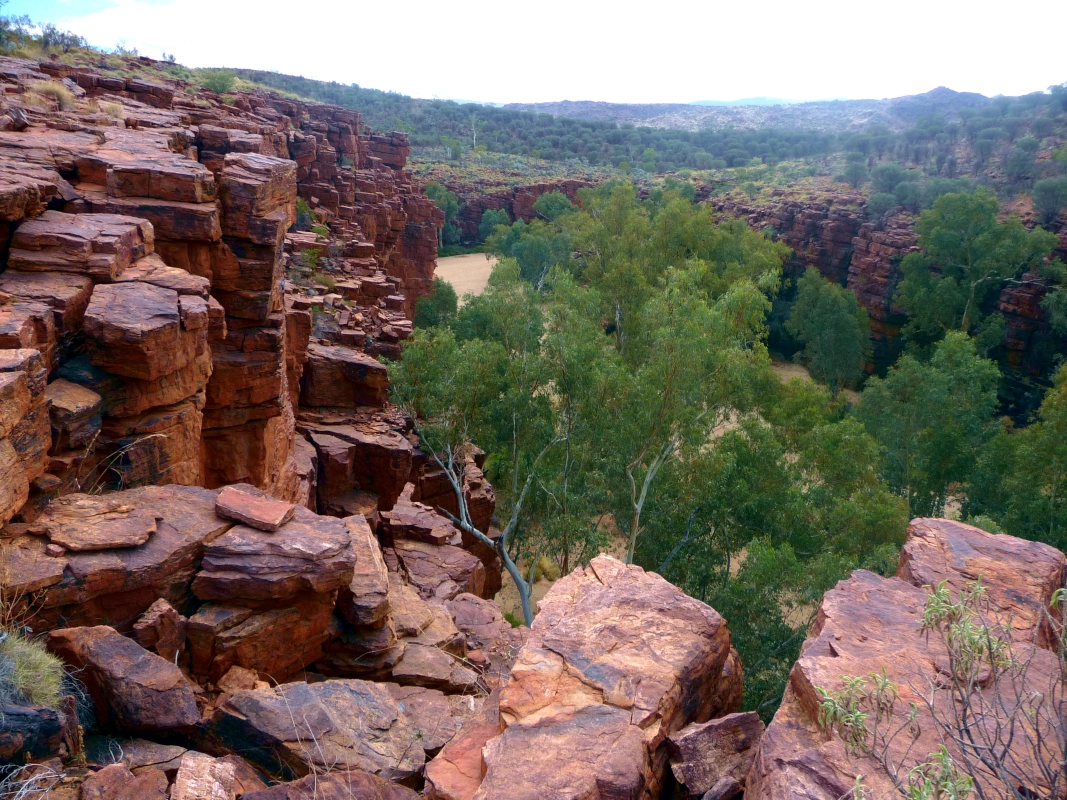
We spent two wonderful days at Trephina Gorge Nature Park, 75 km from Alice Springs. The campground was excellent, with a well-maintained network of walking tracks. We wandered along the sandy creek bed, lined by majestic gum trees, and hiked up the ridges, where we had breathtaking views. In addition, there where abundant wildlife, it was an unforgettable experience.
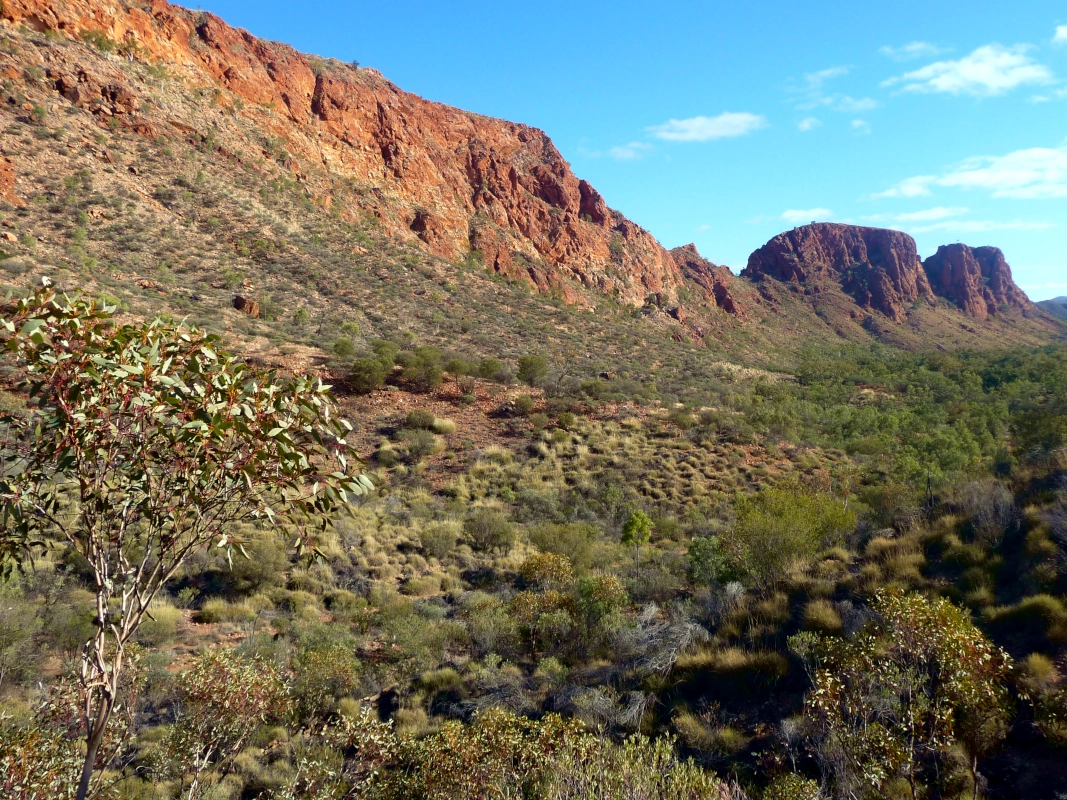
While walking along the sandy creek bed, we loved the huge River Red Gums, Celery Trees, and the largest Ghost Gum in Australia which is 33 meters tall and around 300 years old. Ghost Gums hold deep spiritual significance for Aboriginal people.
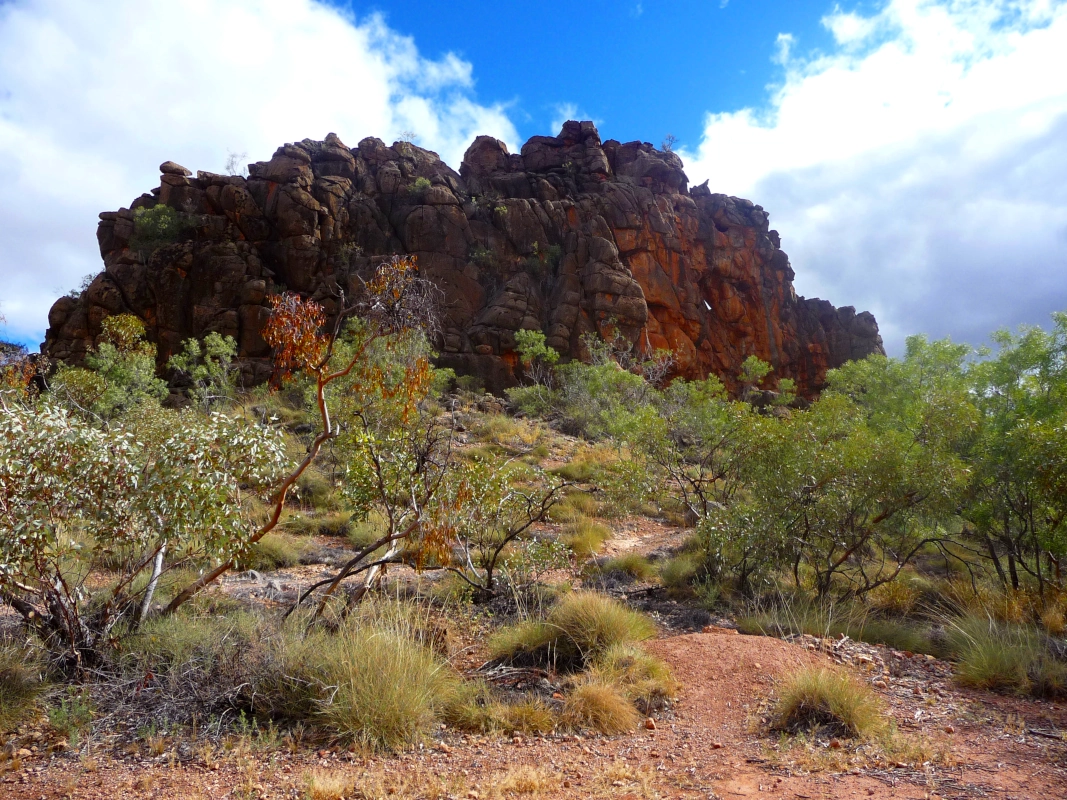
On the way back to Alice Springs, we stopped at the Corroboree Rock Conservation Reserve. We took a short walk around the base of the rock to explore majestic dolomite rock.
Palm Valley
Palm Valley, in the Finke Gorge National Park, is a spectacular area about 140 kilometres from Alice Springs. Accessible only by 4WD due to its rugged and sandy tracks. The valley is home to the ancient Finke River, believed to be one of the world’s oldest rivers, dating back 350 million years. This area is renowned for its Red Cabbage Palms remains of a time when Central Australia was covered in lush tropical forests millions of years ago.
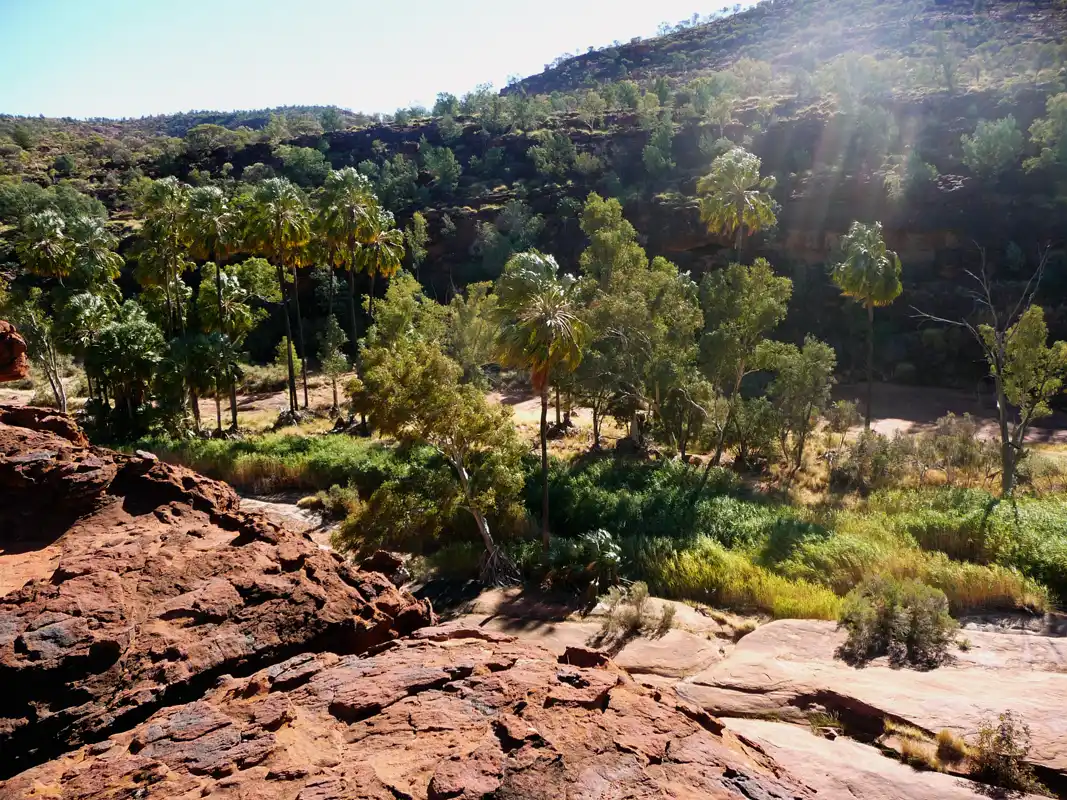
We went on a 4WD Outback Safari with AATKings, which was an excellent organised tour. We travelled through the West MacDonnell Ranges and along the way, we stopped at Hermannsburg, an Aboriginal Historic Precinct rich in history and culture. From there, we went further down the sandy bed of the ancient Finke River into the wonderful Palm Valley.
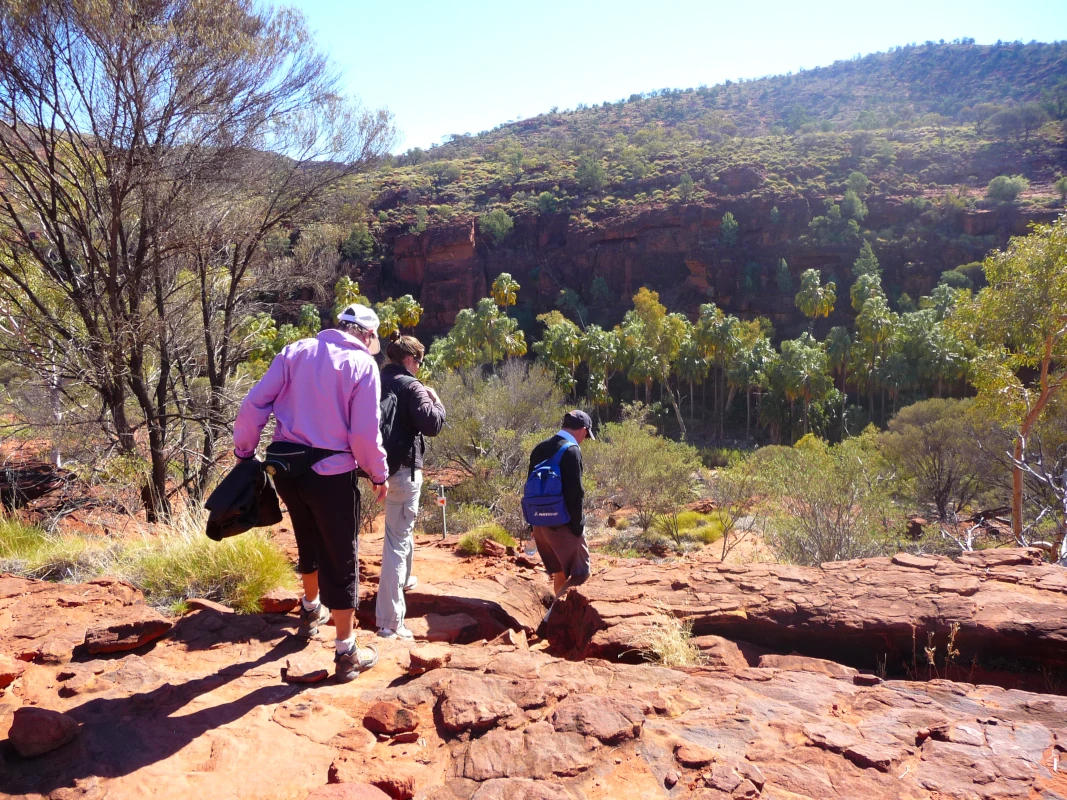
Our knowledgeable guide then led us on a scenic 5 km hike (2-hour return). Only a small group joined the walk, which was slightly rugged but rewarding. We trekked through breathtaking rock formations, soft white sands, serene rock pools, and groves of ancient palm trees. After the hike, we all came together for a wonderful lunch, making for a perfect end to the adventure.
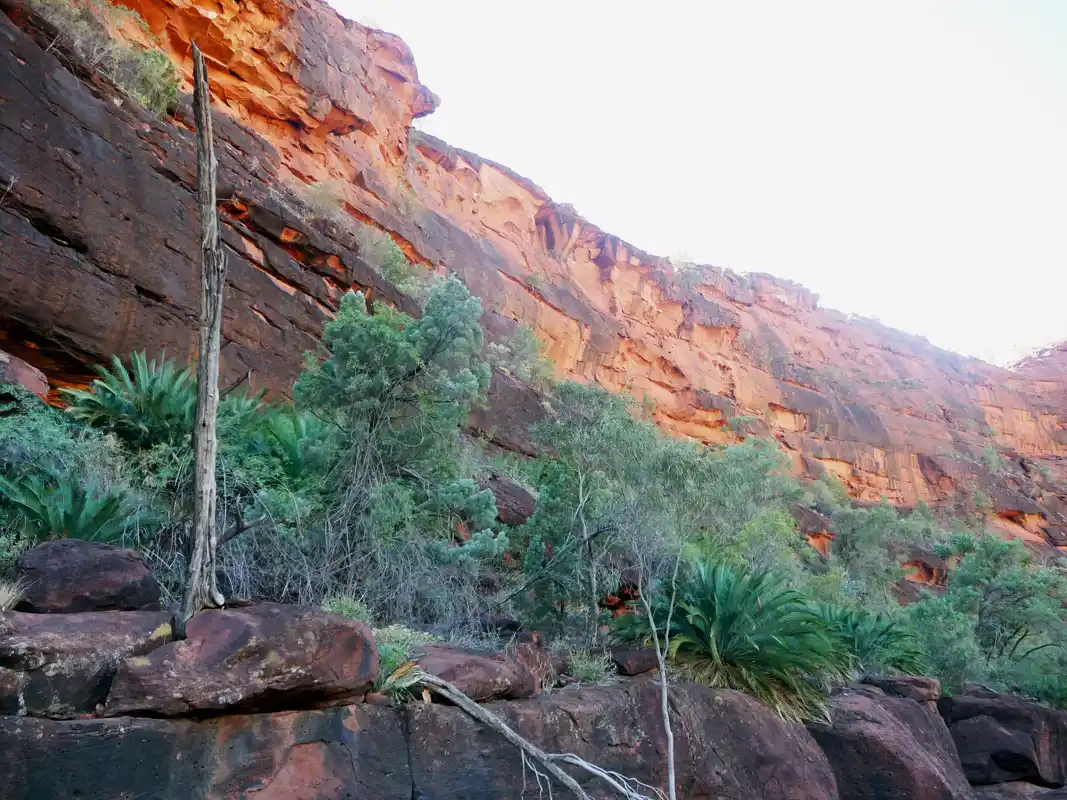
The red cliff above Palm Valley.
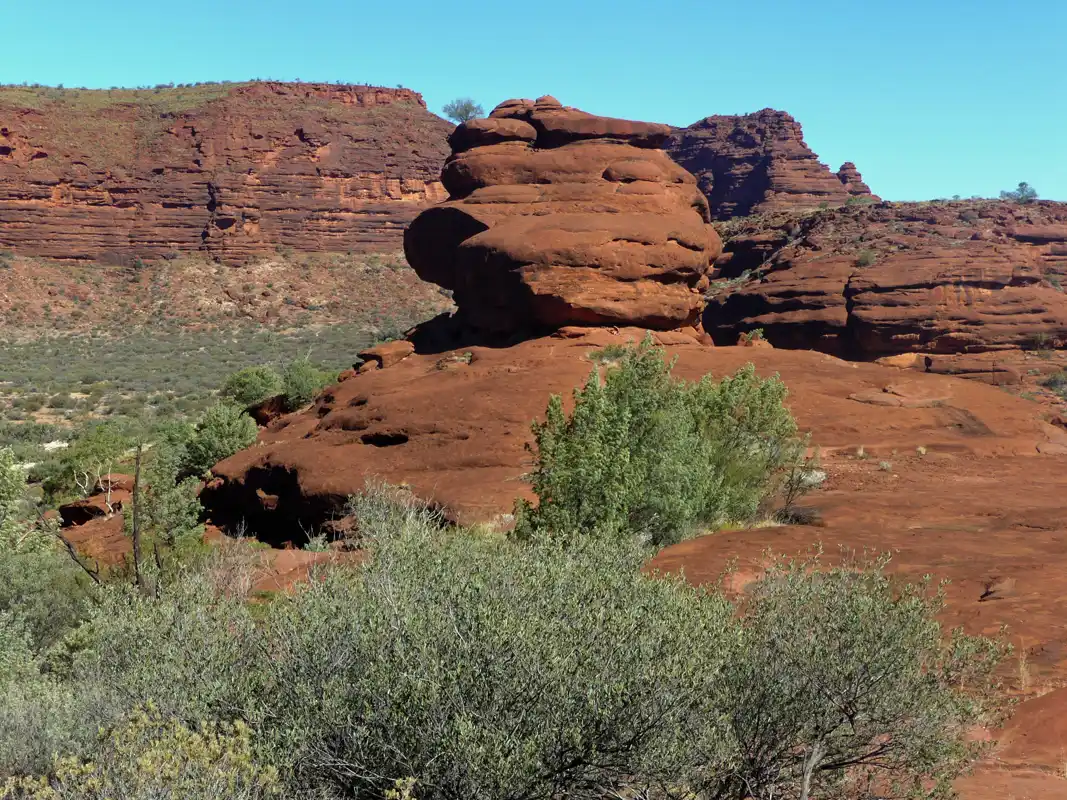
A view of the beautiful red rock formation.
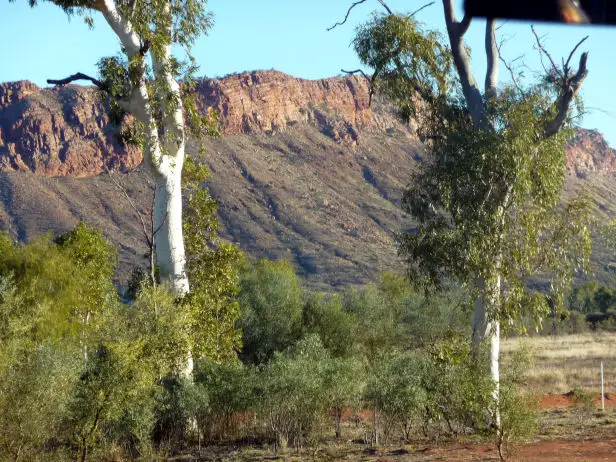

Photo 2010
1954 watercolour painting ‘Twin Ghosts’
The heritage-listed ghost gums to the left of the images were a gathering place for lovers of Aboriginal artist Albert Namatjira. An arson attack destroyed the trees in 2013.
More from Northern Territory: Kakadu & Litchfield National Park